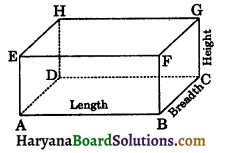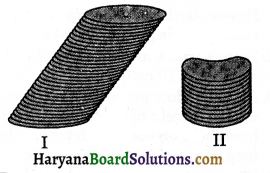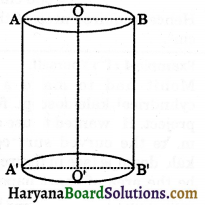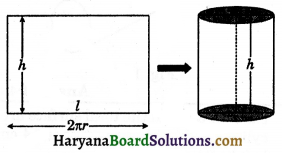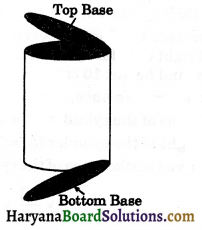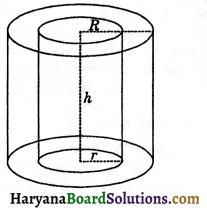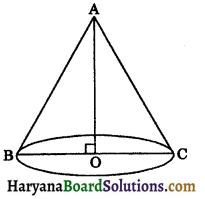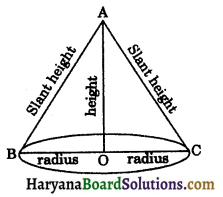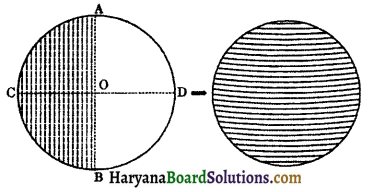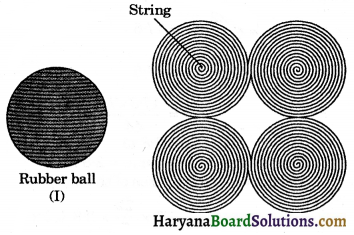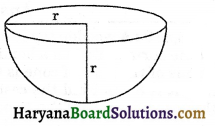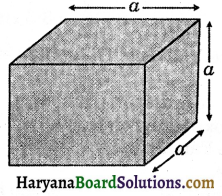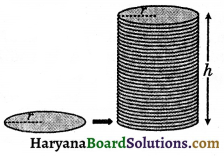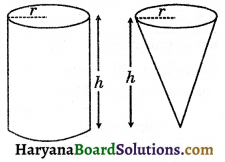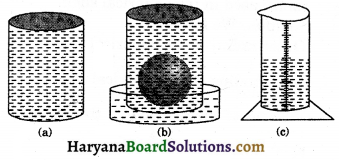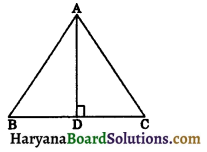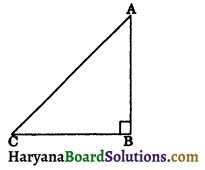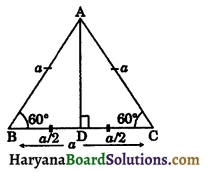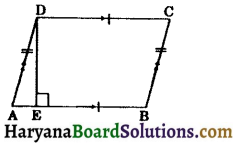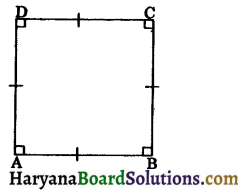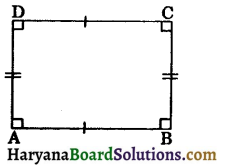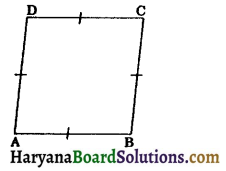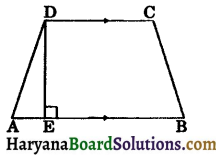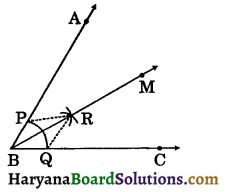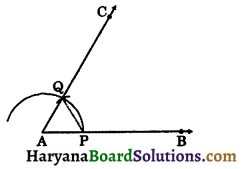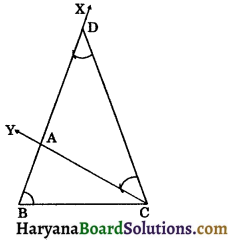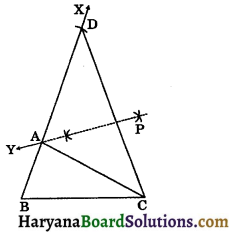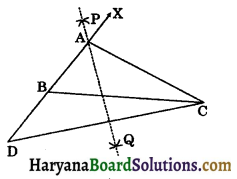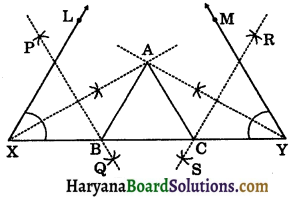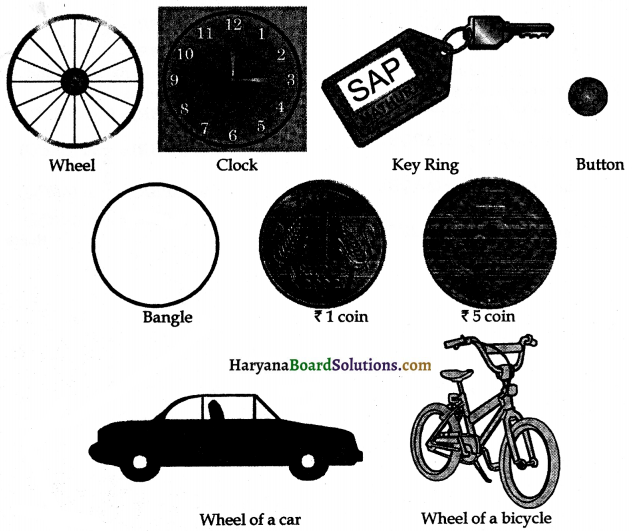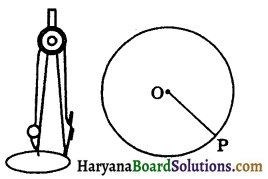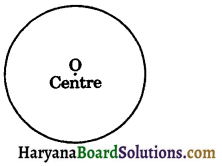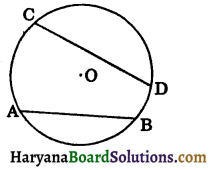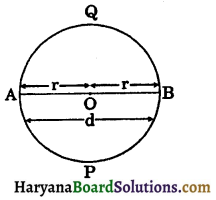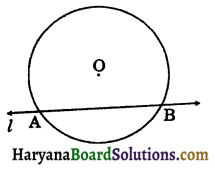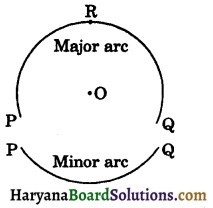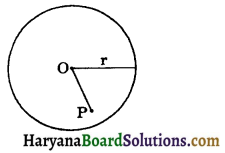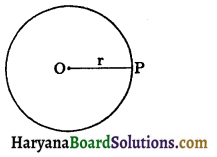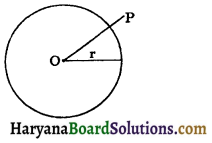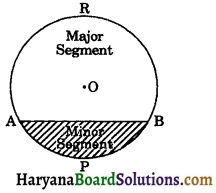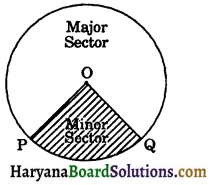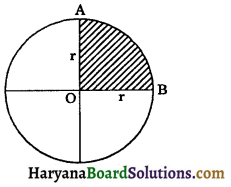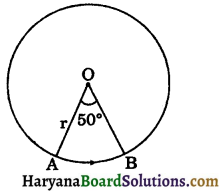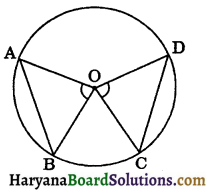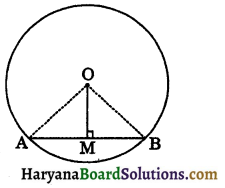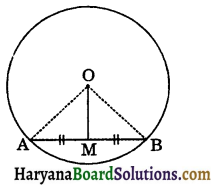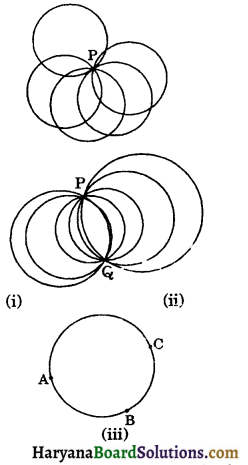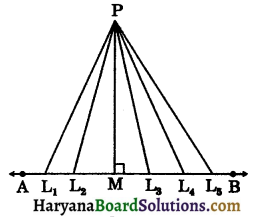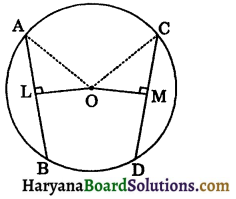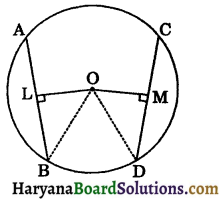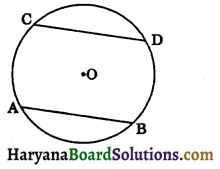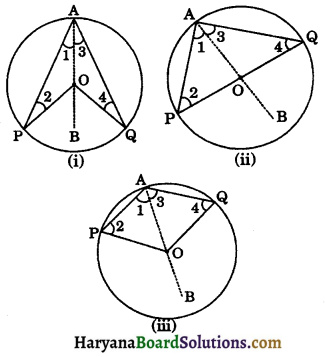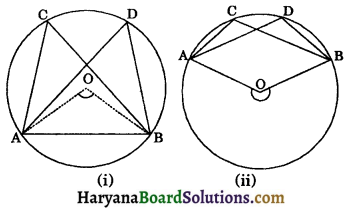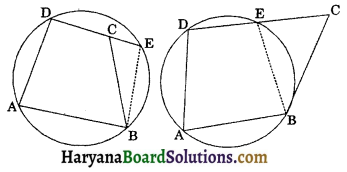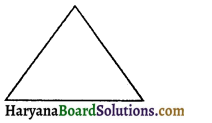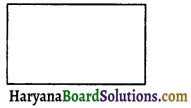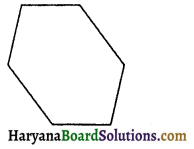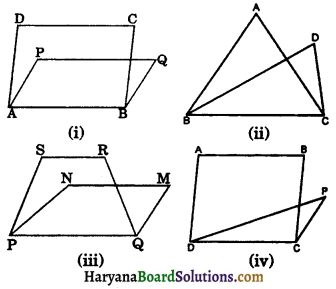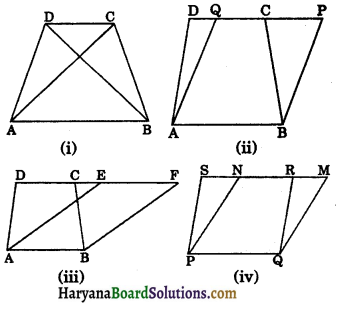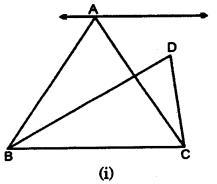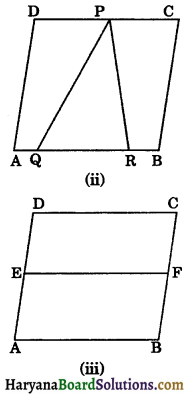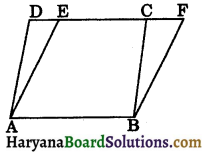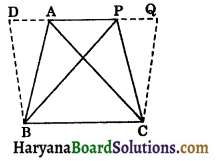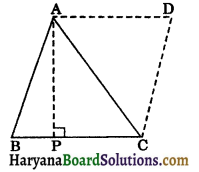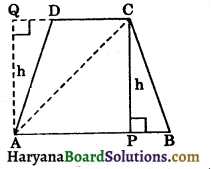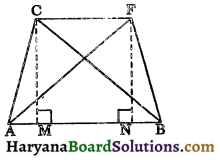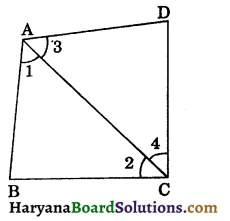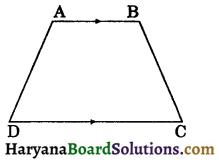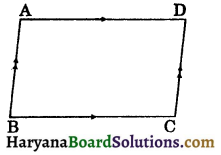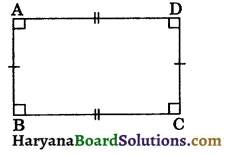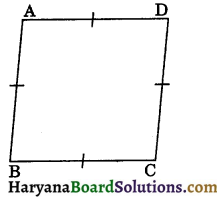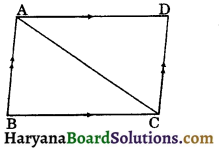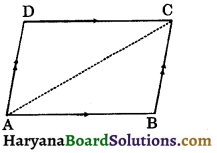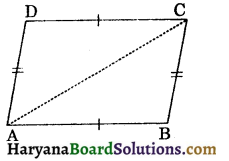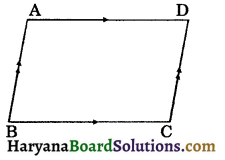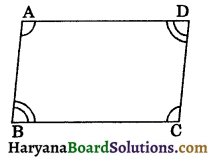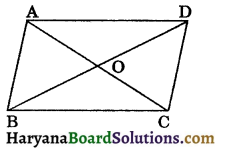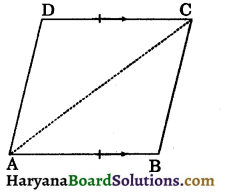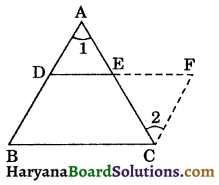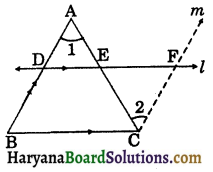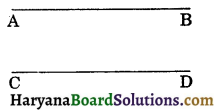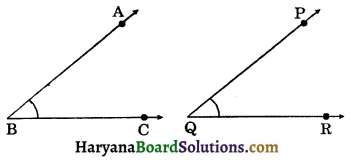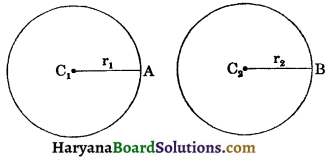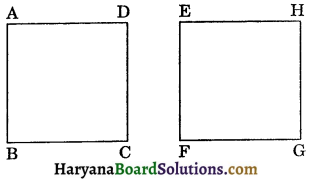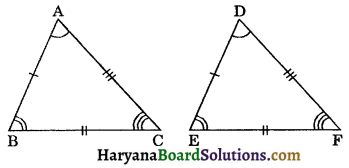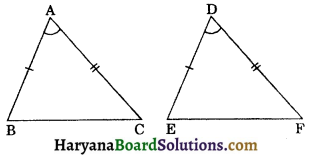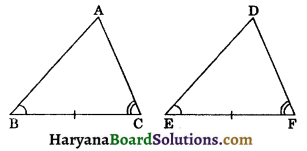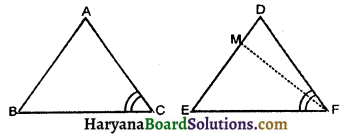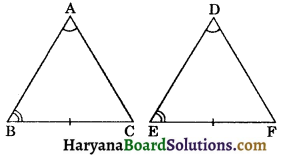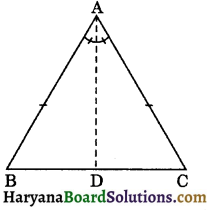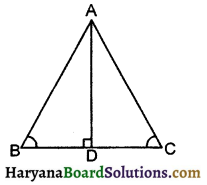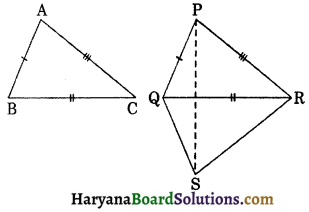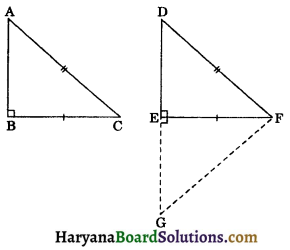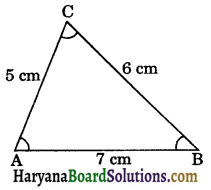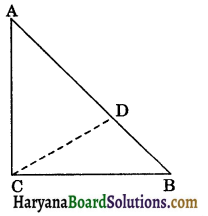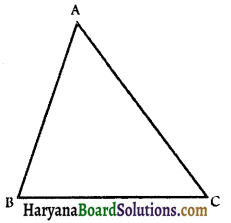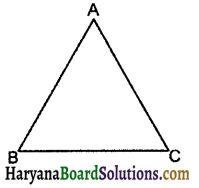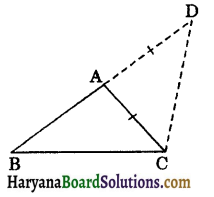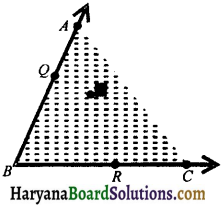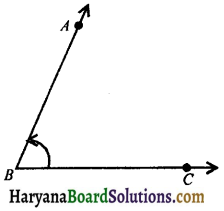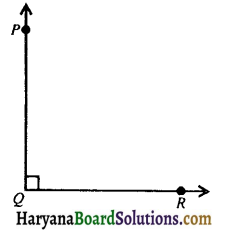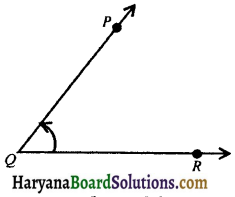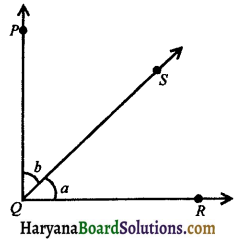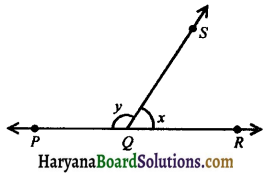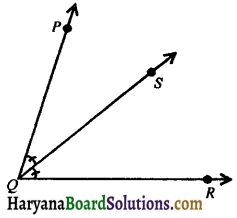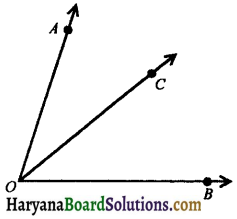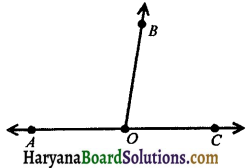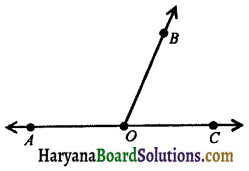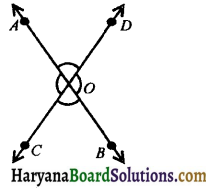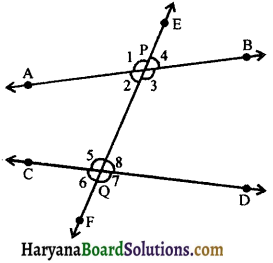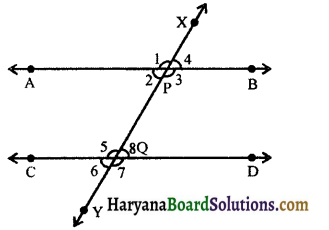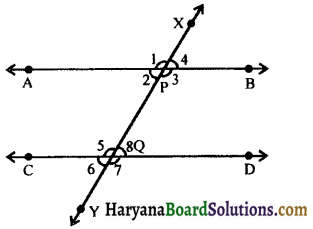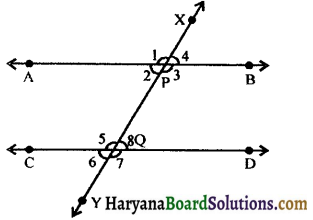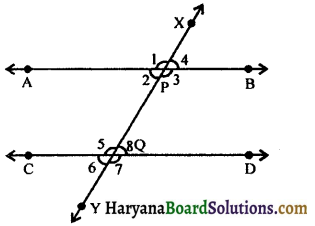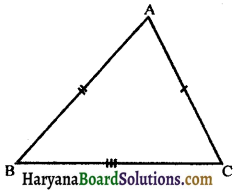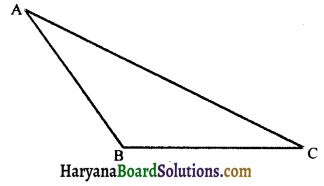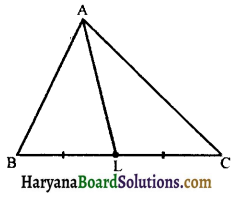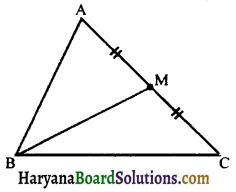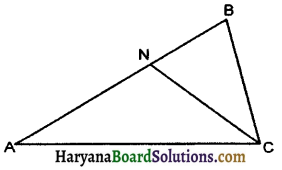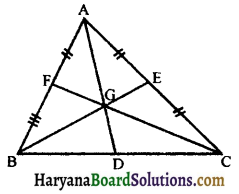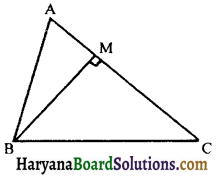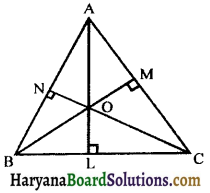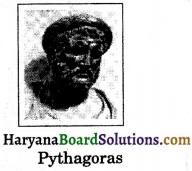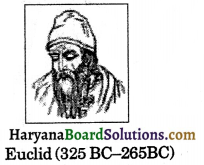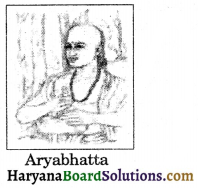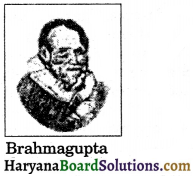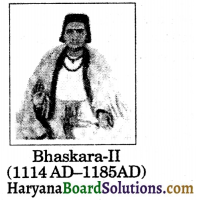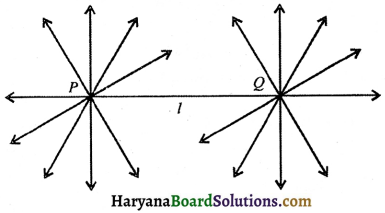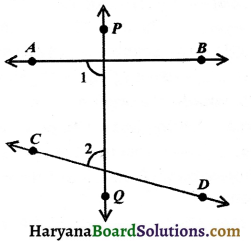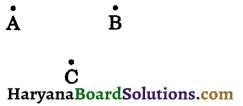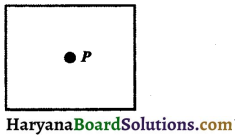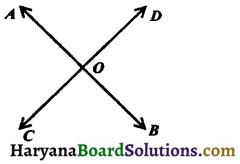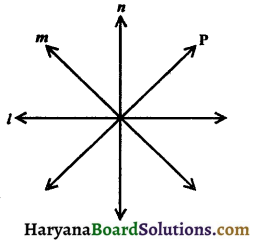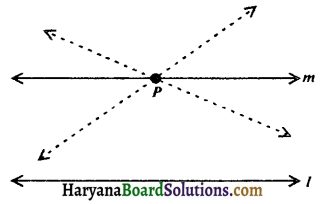HBSE 9th Class Social Science Solutions Civics Chapter 1 समकालीन विश्व में लोकतंत्र
Haryana State Board HBSE 9th Class Social Science Solutions Civics Chapter 1 समकालीन विश्व में लोकतंत्र Textbook Exercise Questions and Answers.
Haryana Board 9th Class Social Science Solutions Civics Chapter 1 समकालीन विश्व में लोकतंत्र
HBSE 9th Class Civics समकालीन विश्व में लोकतंत्र Textbook Questions and Answers
प्रश्न 1.
निम्नलिखित विकल्पों में सही विकल्प का चयन कीजिए।
(क) लोगों को संघर्ष
(ख) विदेशी शासन द्वारा आक्रमण .
(ग) उपनिवेशवाद का अंत
(घ) लोगों की स्वतंत्रता की चाह
उत्तर-
(ख) विदेशी शासन द्वारा आक्रमण .
2. आज की दुनिया के बारे में इनमें से कौन-सा कथन सही है?
(क) राजशाही शासन की वह पद्धति है जो अब समाप्त हो गई हैं।
(ख) विभिन्न देशों में बीच संबंध पहले के किसी वक्त से अब नहीं ज्यादा लोकतांत्रिक हैं।
(ग) आज पहले के किसी दौर से ज्यादा देशों में शासकों का चुनाव लोगों के द्वारा हो रहा है।
(घ) आज दुनिया में सैनिक तानाशाह नहीं रह गए हैं।
उत्तर-
(ग) आज पहले के किसी दौर से ज्यादा देशों में शासकों का चुनाव लोगों के द्वारा हो रहा है।
3. निम्नलिखित वाक्यांशाके में से किसी एक का चुनाव करके इस वाक्य को पूरा कीजिए। अंतर्राष्ट्रीय संस्थाओं में लोकतंत्र की जरूरत है ताकि…….
(क) अमीर देशों की बातों का ज्यादा वजन हो।
(ख) विभिनन देशों की बात का वजन उनकी सैन्य शक्ति के अनुपात में हो।
(ग) देशों को उनकी आबादी के अनुपात में समान मिले।
(घ) दुनिया के सभी देशों के साथ समान व्यवहार हो।
उत्तर-
(घ) दुनिया के सभी देशों के साथ समान व्यवहार हो।
4. इन देशों और लोकतंत्र की उनकी राह में मेल बैठाएँ
I. देश — II. लोकतंत्र की ओर
(क) चिले — 1. ब्रिटिश औपनिवेशिक शासन से आजादी
(ख) नेपाल — 2. सैनिक तानाशाही की समाप्ति ।
(ग) पोलैंड — 3. एक दल के शासन का अंत
(घ) घाना — 4. राजा ने अपने अधिकार छोड़ने पर सहमति दी।
उत्तर-
(क-2, ख-4, ग-3, घ-1)
प्रश्न 5.
गैर-लोकतांत्रिक शासन वाले देशों के लोगों को किन-किन मुश्किलों का सामना करना पड़ता है? इस अध्याय में दिए गए उदाहरणों के आधार पर इस कथन मे पक्ष में तर्क दीजिए।
उत्तर-
- ऐसे लोगों को मूल अधिकारों से वंचित किया जात है।
- उन पर हुए अत्याचारों के विरुद्ध उन्हें आवाज उठाने की आज़ादी नहीं होती।
- वह अपना विरोध व्यक्त नहीं कर सकते।
- अपनी शिकायतों को ज़ाहिर करने के लिए उन्हें संघ-समुदाय बनाने की अनुमति नहीं होती।
- उन्हें स्वतंत्रताएँ प्राप्त नहीं होती।
![]()
प्रश्न 6.
जब सेना लोतंत्र को उखाड़ फेंकती हैं, तो सामान्यतः कौन-सी स्वतंत्रताएँ छीन ली जाती हैं?
उत्तर-
जब सेना लोकतंत्र को उखाड़ फेंकती है तो सामान्यतः लोगों की सभी स्वतंत्रताएँ छीन ली जाती हैं। वह अपने विचार नहीं रख सकते, उन विचारों की अभिव्यक्ति नहीं कर सकते। अपने संघ-समुदाय नहीं बना सकते तथा गतिविधियों व आन्दोलन के लिए एकत्रित नहीं हो सकते।
प्रश्न 7.
वैश्विक स्तर पर लोकतंत्र बढ़ाने में किन बातों में मदद मिलेगी? प्रत्येक मामले में अपने जवाब के पक्ष में तर्क दीजिए।
(क) मेरा देश अंतर्राष्ट्रीय संस्थाओं को ज्यादा पैसे देता है इसलिए मैं चाहता हूँ कि मेरे साथ ज्यादा सम्मानजनक व्यवहार हो और मुझे ज्यादा अधिकार मिलें।
(ख) मेरा देश छोटा या गरीब हो सकता है लेकिन मेरी आवाज को समान आदर के साथ सुना जाना चाहिए क्योंकि इन फैसलों का मेरे देश पर भी असर होगा।
(ग) अंतर्राष्ट्रीय मामलों में अमीर देशों की ज्यादा चलनी चाहिए। गरीब देशों की संख्या ज्यादा है, सिफ, इसके चलते अमीर देश अपने हितों का नुकसान नहीं होने दे सकते।
(घ) भारत जैसे बड़े देशों की आवाज का अंतर्राष्ट्रीय संगठनों में ज्यादा वज़न होना ही चाहिए।
उत्तर-
(क) एक ऐश द्वारा अन्तर्राष्ट्रीय संस्थाओं को अधिक धन देने का यह अर्थ नहीं है कि उसे अन्य देशों की अपेक्षा अधिक समान प्राप्त हो तथा दूसरे देशों को उस देश की अपेक्षा कम अधिकार प्राप्त हों। लोकतंत्र धन के बलबूते पर नहीं पनपने चाहिए और न ही ऐसी व्यवस्था में धनियों का शासन हो।
(ख) एक देश छोटा व निर्धन देश हो सकता है। लोकतंत्र के स्वच्छ संचालन के लिए सभी देशों को (छोटे-बड़े, अमीर-अनर्धन आदि) समान व्यवहार मिलना चाहिए। लोकतंत्र में निर्णय सभी देशों द्वारा समान रूप से किए जाने चाहिएँ।
(ग) यदि अमीर देशों को अन्तर्राष्ट्रीय मामलों में अधिक महत्त्व मिलता है तथा उनकी बात अधिक सुनी जाती है तो विश्व मंच पर वह अपवने हितों को प्रोत्साहित करेंगे। यह प्रवृत्ति लोकतंत्र को मज़बूत नहीं करती, अपितु छति पहुँचाती हैं।
(घ) वह देश जो जनंसख्या तथा आकार में बड़े देश – हैं जैसे भारत, ऐसे देशों को आनुपातिक आधार पर प्रतिनिधित्व मिलना चाहिए। मिल ने कहा था कि लोकतंत्र में आनुपातिक आधार पर प्रतिनिधित्व प्राप्त हो, गैर-आनुपातिक आधार पर नहीं।
प्रश्न 8.
नेपाल के संकट पर हुई एक टीवी चर्चा में व्यक्त किए गए तीन विचार कुछ इस प्रकार के थे। इनमें से आप किसे सही मानते हैं और क्यों?
वक्त-1: भारत एक लोकतांत्रिक देश है इसलिए राजशाही के खिलाफ और लोकतंत्र के लिए संघर्ष करने वाले नेपाली लोगों के समर्थन में भारत सरकार को ज्यादा दखल देना चाहिए।
वक्ता 2: यह एक खतरनाक तर्क है। हम उस स्थिति में पहुँच जाएँगे जहाँ इराक के मामले में अमेरिका पहुँचा है। किसी भी बाहरी शक्ति के सहारे लोकतंत्र नहीं आ सकता।
वक्ता-3: लेकिन हमें किसी देश के आंतरिक मामलों की चिंता ही क्यों करनी चाहिए? हमें वहाँ अपने व्यावसायिक हितों की चिंता करनी चाहिए लोकतंत्र की नहीं।
उत्तर-
लोकतंत्र थोपा नहीं जा सकता, थोपा जाना चाहिए भी नहीं। जब लोकतंत्र को थोपा जाता है जैसाकि अमेरिका ने इराक में करने का प्रयास किया है।, यह लोकतंत्र थोपने का प्रयास है भारत सहित अन्य देशों का यह यत्न होना चाहिए कि लोकतंत्र ऊपर से थोपा नहीं जाना चाहिए। कोई किसी को तैरना सिखा सकता है, परन्तु यदि कोई तैरना सीखता ही नहीं चाहता, तो कोई क्या कर सकता है, तीसरे वक्ता के विचार अधिक वज़नी हैं। हमें अन्य देशों में अपने हित सुरक्षित करने चाहिएँ, परंतु अपने हितों के बदले उन्हें लोकतांत्रिक नहीं बनाना चाहिए।
![]()
प्रश्न 9.
एक काल्पनिक देश आनंदलोक में लोग विदेशी शासन को समाप्त करके पुराने राजपरिवार को सत्ता सौपते हैं। वे कहते हैं, ‘आखिर ज विदेशियों ने हमारे ऊपर राज करना शुरू किया तब इन्ही के पूर्वज हमारे राजा थे। यह अच्छा है कि हमारा एक मजबूत शासक है जो हमें अमीर और ताकतवर बनने में मदद कर सकता है।’ जब किसी ने लोकतांत्रिक शासन व्यवस्था की बात की तो वहाँ के सयाने लागों ने कह कि यह तो एक विदेशी विचार है। हमारी लड़ाई विदेशियों और उनके विचारों को देश से खदेड़ने की थी। जब किसी ने मीडिया की आज़ादी की माँग की तो बड़े-बुजुर्गों ने कहा कि शासन की ज्यादा आलोचना करने से नुकसान होगा और इससे अपने जीवन स्तर को सुधारने में कोई मदद नहीं मिलेगी। “आखिर महाराज दयावान हैं और अपनी पूरी प्रजा के कल्याण में बहुत दिलचस्पी लेते हैं। उनके लिए मुश्किलें क्यों पैदा की जाएँ? क्या हम सभी खुशहाल नहीं होना चाहते?”
उपरोक्त उद्धरण को पढ़ने के बाद चयन, चंपा और चंदू ने कुछ इस तरह के निष्कर्ष निकाले :
चमन-:-आनंदलोक एक लोकतांत्रिक देश है क्योंकि लोगों ने विदेशी शासकों का उखाड़ फेका औरा राजा का शासन बहाल किया।
चंपा-:-आनंदलोक लोकतांत्रिक देश नही हैं क्योंकि लोग अपने शासन की आलोचना नहीं कर सकते। राजा अच्छा हो सकता है और आर्थिक समृद्धि भी जा सकता है लेकिन राजा लोकतांत्रिक शासन नहीं ला सकता।
चंदू-:-लोगों की खुशहाली चाहिए इसलिए वे अपने शासन को अपनी तरफ से फैसले लेने देना चाहते हैं। अगर लोग खुश हैं तो वहाँ का शासन लोकतांत्रिक ही है। . इन तीनों कथनों के बारे में आपकी क्या राय है? इस देश में सरकार के स्वरूप के बारे में आपकी राय
उत्तर-
लोकतंत्र का अर्थ, लोगों का शासन, लोगों द्वारा तथा लोगों के लिए। एक गुलाम देश कभी स्वतंत्र देश नहीं होता। राष्ट्रीय स्वतंत्रता वहाँ होती है जहाँ लोग विदेशी शासन से मुक्त होते हैं। अंग्रेजों से मुक्ति तथा देश की स्वतंत्रता लोकतंत्र के साथ जुड़े विचार थे। यदि एक देश जब विदेशी ताकत से मुक्त हो जाता है तथा बाद में राजतंत्रीय व्यवस्था को अपना लेता है, तो यह लोकतंत्र नहीं है, क्योंकि राजतंत्र लोकतंत्र नहीं होता।।
वास्तव मे जहाँ शासक लोगों द्वारा आलोचना के दायरे में नहीं आते अर्थात् लोगों को अपने शासकों की आलोचना का अधिकार नहीं होता, वहाँ लोकतंत्र नहीं होता। लोकतंत्र का सार यह है कि वहाँ शासकीय अधिकार अंततः लोगों के पास हों, वह अपने शासकों की आलोचना कर सकते हों, चुनावों में उन्हें बदल सकते हों।
लोकतंत्र तथा सुख एक नहीं होते। ज़रूरी नहीं कि ये सुखी व्यक्ति लोकतांत्रिक व्यक्ति भी हो और कि एक लोकतांत्रिक व्यक्ति सुखी व्यक्ति भी हो। यह अलग बात हैं कि एक स्वदल अर्थव्यवस्था लोकतंत्र को सुदृढ़ करने में विशेष भूमिका निभा सकती है तथा निभाती भी है। लोकतंत्र व अर्थव्यवस्था एक-दूसरे के पूरक है।
एक देश जहाँ राज्य अध्यक्ष कोई सम्राट हो तथा वहाँ राजतंत्र हो, तो यह लोकतंत्र नहीं है। यदि सम्राट मात्र एक संवैधानिक मुखिया है जैसा कि ब्रिटेन में हैं, वहाँ लोकतंत्रीय व्यवस्था हो सकती हैं।
HBSE 9th Class Civics समकालीन विश्व में लोकतंत्र Important Questions and Answers
प्रश्न 1.
आयेंदे का सम्बन्ध किस देश से था?
उत्तर-
चिले से। वे चिले के राष्ट्रपति थे।
प्रश्न 2.
आयेंदे की सरकार का कब तख्ता पलट हुआ था?
उत्तर-
11 सितम्बर, 1973 को।
प्रश्न 3.
आयेंदे को चिले का राष्ट्रपति कब बनाया गया था? .
उत्तर-
1970 में।
प्रश्न 4.
1970 में चिले में किस राजनीतिक दल के पास सत्ता था?
उत्तर-
पापुलर यूनिटी. नातक गठबंधन के पास सत्ता थी।
![]()
प्रश्न 5.
चिले में तख्ता पलट के पश्चात् आयेंदे के बाद किसके पास सत्ता आयी थी?
उत्तर-
जनरल ऑगस्तों पिनोशे के हाथों में सत्ता आयी थी।
प्रश्न 6.
कालामा कहाँ स्थित हैं?
उत्तर-
चिले की राजधानी संटियागों से हजार मील दूर।
प्रश्न 7.
कालामा की स्त्रियों ने अपने दःख का इजहार कैसे किया था?
उत्तर-
चुप रह कर, सदैव चुप रह कर।
प्रश्न 8.
आपके देश में कौन-सा राज्य है जो आकार में चिले से मिलता-जुलता हैं?
उत्तर-
केरल।
प्रश्न 9.
जैसा कि चिले में महिलाओं के साथ हुआ, आप संसार के किसी अन्य देश में ऐसे हुए व्यवहार के बारे में जानते हो?
उत्तर-
जारशाही के रूस में महिलाओं के साथ ऐसा कुछ व्यवहार हुआ था।
प्रश्न 10.
कालामा में हुए महिलाओं के बारे में वहाँ के समाचार पत्रों ने क्यों नहीं लिखा/प्रकाशित किया?
उत्तर-
तब समाचार पत्र सरकार के नियंत्रण में थे। इस कारण उनमें महिलाओं के विषय में कुछ प्रकाशित नहीं हो पाया था।
प्रश्न 11.
आज चिले के राष्ट्रपति कौन हैं?
उत्तर-
मिशेल बैशले (जनवरी, 2006)।
प्रश्न 12.
1980 में पोलैंड में कौन-सा राजनीतिक दल शासन करता था?
उत्तर-
पॉलिश यूनाइटिड वर्कर्स पार्टी। वहाँ तक एक-दलीय शासकीय व्यवस्था थी।
प्रश्न 13.
गोलसंक में 1980 में किस फैक्ट्री में हड़ताल हुई थी?
उत्तर-
लेनिन शिपयार्ड।
![]()
प्रश्न 14.
1980 में पोलैंड में जिस व्यक्ति ने हड़ताल में प्रवेश किया था, उसका नाम बताइए।
उत्तर-
लेक वालेशा।
प्रश्न 15.
पोलैंड को घेरे कुछ देशों के नाम बताइए।
उत्तर-
जर्मनी, लुथआनिया, बेलारूस, यूक्रेन।
प्रश्न 16.
पोलैण्ड के अतिरिक्त 1980 में उन दो देशों का नाम बताइए। जहाँ साम्यवादी दल का शासन था?
उत्तर-
बुल्गारिया तथा हंगरी।
प्रश्न 17.
पोलैंड में स्वतंत्र सजदूर दल के गठन की आवश्यकता क्यों थी?
उत्तर-
तब तक वहाँ सरकार के अधीन ही मजदूर दलों का गठन होता था जो सरकार की नीतियों का ही प्रचार करती थी।
प्रश्न 18.
इंग्लैंड में शानदारी क्रांति कब घटी थी?
उत्तर-
1688 में।
प्रश्न 19.
किस वर्ष अमेरिका के तेरह उपनिवेशों – ने अपना स्वतंत्रता संग्राम लड़ा था?
उत्तर-
1776 में।
प्रश्न 20.
अमरीकी स्वतंत्रता संग्राम किस देश के विरुद्ध लड़ा गया था?
उत्तर-
इंग्लैंड के विरुद्ध।
प्रश्न 21.
उन प्रयासों का वर्णन कीजिए जो यह बताएँ कि गरीबों की सहायता के लिए आयेंदे सरकार ने अनुकूल कदम उठाए हों?
उत्तर-
- शिक्षा प्रणाली में सुधार।
- बच्चों को मुफ्त दूध की आपूर्ति।
- किसानों में भूमि का पुनः वितरण।
प्रश्न 22.
दो कारण बताएं जिनस यह मालूम हा कि चिले मे आयोंदे की सरकार लोकप्रिय दिखायी देती थी?
उत्तर-
- आयोंदे सरकार उन विदेशी ताकतों का विरोध करती थी जो चिले के प्राकृतिक संसाधनों का शोषण कर रही थीं।
- उसकी सरकार अमीरों का भी विरोध कर रही थी जो गरीबों के हितों की अनेदखी करते थे।
प्रश्न 23.
1973 में आयेंदे को हराकर पिनोशे शासन ने क्या किया?
उत्तर-
- पिनोशे सरकार ने जनसाधारण पर अत्याचार करने शुरू किए, विशेष रूप से उन पर आयोंदे का समर्थन करते थे।
- पिनोशे सैनिकों ने लगभग दो हजार व्यक्तियों को मार दिया; हज़ारों लापता हो गए।
- लोगों से सभी स्वतंत्रताएँ व अधिकार छीन लिये
प्रश्न 24.
बताइए कि कालामा की महिलाएँ व बच्चे चुप करा दिए गए। इन घटनाओं क विरुद्ध लोगों ने प्रतिक्रिया क्यों नहीं दिखायी थी? ..
उत्तर-
कालामा की महिलाएं व बच्चों को चुप करा दिया गया। लोगों ने इसके विरुद्ध आवाज उठाई कि सैनिक शासन अत्याचारी शासन था तथा लोग उस शासन के अत्याचार से डरते थे।
![]()
प्रश्न 25.
1980 में पोलैंड में कौन शासन करता था?
उत्तर-
1980 में पोलैंड में साम्यवादी दल का शासन था। इस दल का नाम था पॉलिश यूनाटिड वर्कर्स पार्टी। यह एक दलीय व्यवस्था की। सभी शासकीय ताकतें इसी दल । के हाथों में थीं। सरकार का पूरी अर्थव्यवस्था पर नियंत्रण था। सरकार ही मज़दूरों के संघों पर नियंत्रण रखती थी। मज़दूर संघ सरकार व दल से अलग नहीं थे।
प्रश्न 26.
गंदान्सक के मजदूरों की क्या माँगें थीं?
उत्तर-
1980 के आसपास गंदान्सक में लेमिन शिपयार्ड में हड़ताल हो गयी। मजदूरों की माँगें निम्नलिखित थीं:
- सभी मजदूरों को जिन्हें निकाल दिया गया था, वापस लिया जाए।
- मजदूरों ने स्वतंत्र मज़दूर संगठन बनाने के अधिकार की माँग की।
- राजनीतिक प्रक्रिया को अंकुश-मुक्त किया जाए।
- समाचार पत्रों पर से सैंसरशिप हटायी जाए।
प्रश्न 27.
सरकार व वालेश के बीस हुए समझौते की दो बातें बताइए।
उत्तर-
पॉलिश सरकार तथा वालेशा के नेतृत्व के बीच हुए मजदूरों के बीच हड़ताल के समाप्त होने पर समझौते की दो बातें निम्नलिखित बतायी जा सकती हैं-
- मजदूरों को स्वतंत्र मज़दूर संघ बनाने का अधिकार मिल गया;
- मजदूरों हड़ताल करने का अधिकार मिल गया।
प्रश्न 28.
पॉलिश यूनारिड वर्कर्स पार्टी की सरकार क्यों कमज़ोर पड़ने लग गयी?
उत्तर-
पॉलिश यूनारिड बर्कर्स पार्टी की पॉलिश सरकार के कमजोर पड़ने के कारणों में निम्नलिखित का उल्लेख किया जा सकता है।
- वालेशा की सोलिडेरिटी की सदस्या संख्या एक करोड़ तक पहुँच गयी।
- सरकार भ्रष्टाचार की ओर बढ़ने लगी। उसे डर पैदा हो गया कि वालेशा की सोलिडेरिटी उन पर हावी हो जाएगी। घबराहट में सरकार ने सैनिक कानून लागू कर दिया।
- सरकार ने अत्याचार आरंभ कर दिए। वालेशा के लोगों को जेल में डाल दिया; उनकी स्वतंत्रताएँ वापस ले लीं।
- अर्थव्यवस्था में तंज़ी से गिरावट आने लगी। सरकार वितीय संकट में ग्रस्त होती चली गयी।
प्रश्न 29.
लेक वालेशा ने पोलैण्ड में किस प्रकार सत्ता प्राप्त की?
उत्तर-
1988 में सोलिडेरिटी ने फिर से हड़तालें करवाई और लेक वालेशा ने इनकी अगुवाई की। इस समय पोलैंड की सरकार पहले से कमजोर थी, सोवियत संघ से मदद का भी पहले जैसा भरोसा न था और अर्थव्यवस्था में तेजी से – गिरावट आ रही थी। लेक वालेशा के साथ समझौता-वार्ता का एक और दौर चला और अप्रैल 1989 में जो समझौता हुआ उसमें स्वतंत्र चुनाव कराने की माँग मान ली गई। सोलिडेरिटी ने सीनेट के सभी 100 सीटों के लिए चुनाव लड़ा और उसे 99 सीटों पर सफलता मिली। अक्तूबर 1990 में पोलैंड मे राष्ट्रपति पद के लिए पहली बार चुनाव हुए जिसमें एक से ज्यादा दल हिस्सा ले सकते थे। लेक वालेशा को पोलैंड का राष्ट्रपति चुना गया।
प्रश्न 30.
पोलैण्ड में सोलिडेरिटी के लोकप्रिय होने के कारणों का वर्णन कीजिए।
उत्तर-
- सोलिडेरिटी एक ऐसा संगठन था जो मज़दूरों के हितों की प्राप्ति के लिए गठित किया गया था।
- यह मजदूरों के अधिकारों के लिए संघर्षरत रही।
- लोगों के विचारों की अभिव्यक्ति के लिए भी सोलिडेरिटी लड़ रही थी।
- बाद के दिनों में यह पार्टी लोकतंत्र की बहाली के लिए लड़ने लगी थी।
प्रश्न 31.
चिले की पिनोशे सरकार तथा पोलैण्ड के साम्यवादी दल के शासन में अंतर व समानताएँ बताइए।
उत्तर-
जिले में पिनोशे शासन और पोलैंड के साम्यवादी शासन में काफी अंतर है। चिले में सैनिक तानाशाह का राज था। जबकि पोलैंड में एक पार्टी का राज था। पोलैंड की सरकार का दावा था कि वह मजदूर वर्ग की ओर से शासन चला रही है। पिनोशे ने ऐसा कोई दावा नहीं किया और खुलेआम बड़े पूंजीपतियों को लाभ पहुँचाया। इन असमानताओं के बावजूद दोनों में कुछ समानताएँ भी थीं ।
- लोग अपने शासकों को चुनाव या उनमें बदलाव नहीं कर सकते थे।
- किसी को अपने विचार व्यक्त करने, संगइन बनाने, विरोध करने और राजनैतिक गतिवियिों में हिस्सा लेने की वास्तविक आजादी न थी।
![]()
प्रश्न 32.
आयोंदे, वालेश तथा मिशेल (चिले की वर्तमान राष्ट्रपति) में आर्थिक मामलों के समान नजरिया ‘नहीं था? समझाइए।
उत्तर-
आयेंदे, वालेशा तथा मिशेल में आर्थिक व सामाजिक मामलों के संदर्भ में एक जैसा नज़रिया नहीं था। आयेंदे न अर्थव्यवस्था को नियंत्रित ढंग से चलाना पंसद किया जबकि वालेशा चाहते थे कि बाज़ार सरकारी दखल से मुक्त हों। मिशेल इस मामले में कुछ मध्यमार्गी रास्ता अपनाने वाली हैं। फिर भी इन तीनों सरकारों की कुछ विशेषताएँ समान थीं। यहाँ लोगों द्वारा चुनी गई सरकारें ही शासन चला रही थी। बिना चुने हुए नेता या बाहर से संचालित शक्तियाँ या फौज शासन नहीं चला रही थीं। लोगों को विभिन्न प्रकार की बुनियादी राजनैतिक स्वतंत्रता हासिल थीं।
प्रश्न 33.
लोकतंत्र की पहचान के कोई दो तरीके बताइए।
उत्तर-
लोकतंत्र में यह व्यवस्था रहती है कि लोग अपनी मर्जी की सरकार चुनें।
लोकतंत्र में सिर्फ लोगों द्वारा चुने गए नेताओं को ही देश पर शासन करना चाहिए।
लोगों को अभिव्यक्ति की आजादी, संगठन बनाने और विरोध करने की आज़ादी जरूरी हैं।
प्रश्न 34.
जब चिले व पोलैण्ड में फौजी शासन था तब लोगों पर क्या-क्या प्रतिबंध थे?
उत्तर-
- लोगों के पास वैयक्तिक स्वतंत्रताएँ नहीं थीं।
- उन्हें विचार रखने का अधिकार नहीं था।
- वह हड़ताल नहीं कर सकते थे।
- वह अपना रोष एवं शिकायतें नहीं बता सकते थे।
- वह प्रेस में अपने विचार नहीं रख सकते थे।
प्रश्न 35.
चिले के वर्तमान राष्ट्रपति के विषय में जानकारी दीजिए।
उत्तर-
चिले की वर्तमान राष्ट्रपति मिशेल बैशले आयोंदे सरकार के जनरल बैशेल की बेटी हैं। जनवरी 2006 में उन्होंने सत्ता सम्भाली है। समाजवादी विचारों वाली मिशेल पेशे से डॉक्टर हैं और लातिनी अमेरिका में रक्षा मंत्री के पद पर आने वाली पहली महिला हैं। राष्ट्रपति के चुनाव में उन्होंने जिस व्यक्ति को हराया वह चिले के सर्वाधिक धनी व्यक्तियों में गिना जाता है। चिले में लोकतंत्र के पतन और उत्थान की इस कथा को हम उनके ही भाषण के एक अंश समाप्त करते हैं।
“चूंकि मैं नफरत का शिकर बनी थी इसलिए मैंने अपना यह जीवन नफरत को खत्म करने, सहनशीलता और समझदारी के साथ-साथ प्रेम को बढ़ाने के प्रति समर्पित कर दिया है।”
प्रश्न 36.
लोकतंत्र के विकास में शुरुआती चरणों का वर्णन कीजिए।
उत्तर-
आधुनिक लोकतंत्र की कहानी कम-से-कम दो सदी पहले शुरू हुई। 1789 के जनविद्रोह ने फ्रांस में टिकाऊ और पक्के लोकतंत्र की स्थापना नहीं की थी। पूरी उन्नीसवीं सदी भर फ्रांस में बार-बार लोकतंत्र को उखाड़ फेंका गया और बार-बार इसे बहाल किया गया। लेकिन फ्रांसीसी क्रांति ने पूरे यूरोप में जगह-जगह पर लोकतंत्र के लिए संघर्षों की प्रेरणा दी। ब्रिटेन में लोकतंत्र की तरफ कदम उठने की शुरुआत फ्रांसीसी क्रांति से काफी पहले ही हो गई थी। लेकिन यहाँ प्रगति की रफ्तार काफी कम थी। अठारहवीं और उन्नीसवीं सदी में हुए राजनैतिक घटनाक्रमों ने राजशाही और सामंत – वर्ग की शक्ति में कमी कर दी थी। फ्रांसीसी क्रांति के आसपास ही उत्तर-अमेरिका में स्थित ब्रिटिश उपनिवेशों ने 1776 में खुद को आजाद घोषित कर दिया था। अगले कुछ ही वर्षों में इन उपनिवेशों ने साथ मिलकर संयुक्त राज्यअमेरिका आधुनिक अमेरिका का गठन किया। 1787 में उन्होंने एक लोकतांत्रिक संविधान को मंजूर किया। लेकिन इस व्यवस्था में भी मतदान का अधिकार पुरुषों तक सीमित था।
उन्नीसवीं सदी में लोकतंत्र के लिए होने वाले संघर्ष अकसर राजनैतिक समानता, आजादी और न्याय जैसे मूल्यों को लेकर ही होते थे। एक मुख्य माँग रहा करती थी कि सभी वयस्क नागरिकों को मतदान का अधिकार हो।
प्रश्न 37.
घाना का उदाहरण देते हुए बताइए कि – वहाँ किस प्रकार उपनिवेशवाद का अंत तथा लोकतंत्र की शुरुआत थी?
उत्तर-
पश्चिमी अफ्रीका देश घाना का उदाहरण उपनिवेश रहे देशों के सामान्य अनुभव हो बहुत अच्छी तरह दर्शाता है। यह ब्रिटिश उपनिवेश था और तब इसका नाम .गोल्ड कोस्ट था। यह 1957 मे आज़ाद हुआ। यह अफ्रीका में सबसे पहले आज़ादी पाने वाले देशों में एक था। इससे
अनेक अफ्रीकी देशों को आजादी के लिए संघर्ष करने की प्रेरणा मिली। एक सुनार के पुत्र और शिक्षक रहे वामे एनक्र्मा ने देश की आजादी की लड़ाई से सक्रिय भूमिका निभाई थी।
![]()
आज़ादी के बाद एनक्रूमा घाना के पहले प्रधानमंत्री और फिर राष्ट्रपति बने। वे जवाहर लाल नेहरू के मित्र और अफ्रीका में लोकतंत्रादियों के लिए प्रेरणा पुरुष थे। लेकिन वे नेहरू के नवशे-कदम पर टिक नहीं पाए। उन्हेंने अपने आपको आजीवन राष्ट्रपति के रूप में चुनवा लिया। लेकिन थोडे समय बाद ही 1966 में सेना ने उनका तख्तापलट कर दिया।
प्रश्न 38.
भारत में पड़ोसी देश मे लोकतंत्र के अनुभव पर एक टिप्पणी लिखिए।
उत्तर-
भारत के पड़ोस में भी काफी बड़े बदलाव हुए। 1990 के दशक में ही पाकिस्तान और बांग्लादेश में सैनिक शासन की जगह लोकतंत्र का आगमन हुआ। नेपाल में राजा ने अपने अनेक अधिकार, चुने हुए प्रतिनिधियों की – सरकार को सौंपे और खुद संवैधानिक प्रमुख बने रहे।
लेकिन ये बदलाव स्थायी नहीं थे। 1999 में जनरल मुशर्रफ ने पाकिस्तान मे फिर से सैनिक शासन कायम कर लिया। 2005 में नेपाल के नए राजा ने चुनी हुई सरकार को बर्खास्त कर दिया और पिछले दशक में लोगों को दी गई राजनैतिक आज़ादी को समाप्त कर दिया। लेकिन 2006 में फिर लोकतांत्रिक शक्तियों की विजय हुई। राजा का संसद की बैठक बुलानी पड़ी और संसद ने राजा की शक्तियों को घटाकर उसे सिर्फ नाममात्र का शासक बना दिया।
नए देशों में लोकतांत्रिक व्यवस्था की ओर प्रयास तेज हो रहे हैं। सन् 2005 तक करीब 140 देशों में बहुदलीय प्रणाली के दायरे में चुनाव कराए जाते रहे हैं।
प्रश्न 39.
म्यांमार में लोकतंत्र का अनुभव किस प्रकार रहा है? चर्चा कीजिए।
उत्तर-
म्यांमार, जिसे पहले बर्मा कहा जाता था, यह 1948 में ही औपनिवेशिक शासन से आजाद हुआ और इसने लोकतंत्र को अपनाया। लेकिन 1962 में सैनिक तख्तापलट से लोकतंत्र का अंत हो गया। 1990 में लगभग 30 वर्षों बाद पहली बार चुनाव कराए गए। आंग सान सू ची का अगुवाई वाली नेशनल लीग फॉर डेमोक्रेसी कई ने चुनाव जीते। पर म्यांमार के फौजी शासकों ने सत्ता छोड़ने से इंकार कर दिया और चुनाव परिणामों का मान्यता नहीं दी। बल्कि उन्होंने सूची समेत चुने हुए लोकतंत्र समर्थक नेताओं को गिरफ्तार कर जेल में डाल दिया या उनके घर में ही नज़रबंद कर दिया। बहुत छोटी-छोटी राजनैतिक गतिविधियों के लिए भी लोगों को पकड़ कर जेल की सज़ा दी गई। यहाँ सरकार के खिलाफ सार्वजनिक रूप से बोलने या बयान जारी करने वाले किसी व्यक्ति सरकार के खिलाफ सार्वजनिक रूप से बोलने या बयान जारी करने वाने किसी भी व्यक्ति को बीस वर्ष तक की जेल की सज़ा हो सकती है।
म्यांमार की फौजी सरकार की ज्यादतियों से तंग आकर वहाँ के 6 से 10 लाख लोगों ने अपना घर-बार छोड़ दिया है और दूसरी जगहों पर शरणार्थी बनकर रह रहे हैं।
नज़रबंदी की सज़ा झेलने के बावजूद सूची ने लोकतंत्र के लिए अपना अभियान जारी रखा है। उनके अनुसार “बर्मा में लोकतंत्र की मुहिम वहां के लोगों की विश्व समुदाय के स्वतंत्र और बराबर सदस्य के रूप मे पूर्ण और अर्थपूर्ण जीवन जीने का संघर्ष हैं।”
उनके संघर्ष को अंतरराष्ट्रीय स्तर पर मान्यता मिली है। उन्हें नोबल शांति पुरस्कार भी मिला है। फिर भी म्यांमार के लोगों को अपने देश में लोकतांत्रिक सरकार कायम करने का संघर्ष समाप्त नहीं हुआ हैं।
प्रश्न 40.
यहाँ विश्व-लोकतंत्र को मजबूत करने के लिए कुछ सुझाव हैं। क्या आप इन बदलावों का समर्थन करते हैं? क्या ये बदलाव हो सकते हैं? प्रत्येक सुझाव के लिए अपने तर्क दीजिए। सुरक्षा परिषद् के स्थायी सदस्यों की संख्या बढ़नी चाहिए।
संयुक्त राष्ट्र को आम सभा को विश्व संसद के रूप में काम करना चाहिए। जिसमें सदस्य देशों में प्रतिनिधिों की संख्या उस देश की आबादी के आधार पर तय हों। ये प्रतिनिधि एक विश्व सरकार का चुनाव करें।
अलग-अलग देश अपनी सेना नहीं रखें। विभिन्न राष्ट्रों के बीच टकराव की स्थिति में शांति कायम करने के लिए संयुक्त राष्ट्र अपने कार्य दल रखे।
संयुक्त राष्ट्र के प्रमुख का चुनाव दुनिया भर के लोग प्रत्यक्ष मतदान से करें।
उत्तर-
समय बदलता है तथा समय के साथ परिवर्तन भी होने चाहिए। सुरक्षा परिषद् में बेहतर प्रतिनिधित्व के लिए तथा उसके प्रभावकारी कार्य-संचालन के लिए उसके स्थायी सदस्यों की संख्या बढ़ायी जानी चाहिए अथवा सुरक्षा परिषद् की रचना व कार्य प्रणाली मे फेर-बदल होना चाहिए। महासभा को विश्व संसद के रूप में करना चाहिए तथा उसमें आनुपातिक आधार पर प्रतिनिधित्व होना चाहिए। यदि संयुक्त राष्ट्र के पास अपनी सेना हो, तो शांति स्थापना में काफी सहायता हो सकती है। संयुक्त राष्ट्र राष्ट्रपति की व्यवस्था हो सकती हैं तथा चुने हुए सदस्य उसका चुनाव कर सकते हैं।
![]()
प्रश्न 41.
क्या हम वैश्विक लोकतंत्र की ओर अग्रसर हैं? उदाहरण दीजिए।
उत्तर-
यह सही है कि लोकतंत्र का विस्तार हुआ है तथा विस्तार भी हो रहा है, यद्यपि कहीं-कहीं अलोकतंत्र के उदाहरण भी मिलते हैं। राष्ट्रों में लोकतंत्र का विस्तार हुआ है। परन्तु अन्तर्राष्ट्रीय संस्थाओं में लोकतंत्र के विस्तार में कुछेक कठिनाइयाँ स्पष्ट दिखायी दे रही हैं।
- आज संयुक्त राष्ट्र संघ के 192 सदस्य हैं। यह – एक विश्व संस्था है। यह सभी महासभा के सदस्य भी हैं। क्योंकि यह प्रभुसत्ता सम्पन्न राष्ट्रों की संस्था है, इसमें प्रत्येक देश दूसरे देश के समान है; प्रत्येक सदस्य राज्य को एक मत प्राप्त होता है। दूसरे सदस्य राज्य के समान। वस्तुतः आनुपातिक प्रतिनिधित्व के अभाव में इस तथ्य को पूर्णतयः लोकतांत्रिक नहीं कहा जा सकता।
- संयुक्त राष्ट्र सुरक्षा परिषद् एक कार्यपालिका जैसी है। इसके कुल 15 सदस्य हैं 5 : स्थायी तथा 10 अस्थायी। 5 स्थायी सदस्यों अमेरिका, रूस, फ्रांस, ब्रिटेन चीन मे प्रत्येक को वीटो शक्ति प्राप्त है। दूसरे शब्दों में सुरक्षा परिषद् के सभी सदस्य बराबर नहीं हैं। यह बात भी अपने आप मे लोकतांत्रिक नहीं है।
- अन्तर्राष्ट्रीय मुद्रा निधि के 173 सदस्य एक-दूसरे के समान नहीं हैं प्रत्येक देश को मिलने वाला धन इस तथ्य पर तोला जाता है कि उस देश ने कितना वित्तीय योगदान दिया है। जी 8 के देशों को अपंखाकृत अधिक-अधिकार प्राप्त हैं।
- विश्व व्यापार केंद्र में भले ही सभी देश एक-दूसरे के बराबर हों, परन्तु वास्तविक निर्णय पहले ही अनुपाचिक बैठकों में बड़े-बड़े देशों द्वारा ले लिए जाते हैं। यह तथ्य भी अन्तर्राष्ट्रिय स्तर पर लोकतांत्रिक प्रवृत्ति को धक्का पहुँचा रहा है।
वस्तुनिष्ठ प्रश्न
प्रश्न 1. निम्नलिखित वाक्यों में रिक्त स्थानों को उपयुक्त शब्दों से भरें।
(i) 1973 में पदमुक्त चिले का नेता था…..। (आयेंदे, पिनोशे)
(ii) कालामा ………….से हजारों मील दूर तक स्थान (शिकागो, संटयागो)
(iii) 1980 के दशक मे पोलैण्ड के मजदूर संगठन के नेता का ना………था। (वालेशा, त्युक्मवर्ग)
(iv) फ्रांसीसी क्रांति की घटना…….में हुई थी। (1776, 1789)
(v) सालाजार…………..का एक तानाशाह था। (पुर्तगाल, म्यांमार)
(vi) सूची को…………में नोबेल पुरस्कार मिला था। (अर्थशास्त्र में, शांति)
उत्तर-
(i) आयोंदे,
(ii) संटयागों,
(iii) वालेशा,
(iv) 1789,
(v) पुर्तगाल,
(v) शान्ति।
प्रश्न 2. निम्नलिखित वाक्यों में सही (√) च गलत (x) का चयन कीजिए।
(i) रूस लोकतंत्र-प्रोत्साहन कार्यों में लगा हुआ है।
(ii) म्यांमार बर्मा का बदला हुआ नाम हैं।
(iii) गोल्ड कोस्ट को नामीबिया कहा जाता है।
(iv) सालाजार पुर्तगाल का तानाशाह था।
(v) पोलैण्ड के एक लोकप्रिय/निर्वाचित राष्ट्रपति का नाम था पिनोशे।
(vi) लोकतंत्र सरकार की एक प्रणाली है।
उत्तर-
(i) x,
(ii) √,
(iii) x,
(iv) √,
(v) x,
(vi) √,
![]()
प्रश्न 3. निम्नलिखित विकल्पों में सही विकल्प का चयन कीजिए।
(i) आयेंदे के राजनीतिक दल का नाम था
(a) सोलिडेरिटी
(b) पापुलर युनिटी
(c) यूनाइटिड वर्कर्स पार्टी
उत्तर-
(b) पापुलर युनिटी
(ii) म्यांमार को कभी कहा जाता था –
(a) हांग-काग
(b) बर्मा
(c) लाओस
(d) इन्डोनेशिया
उत्तर-
(b) बर्मा
(iii) निम्नलिखित देश लोकतंत्र से अलोकतंत्र में परिवर्तित हुआ था.
(a) अमेरिका
(b) चिले
(c) इंग्लैंड
(d) फ्रांस
उत्तर-
(b) चिले
(iv) वालेश 1990 में निम्नलिखित देश का राष्ट्रपति चुना गया था
(a) चिले
(b) पोलैण्ड
(c) पुर्तगाल
(d) म्यांमार
उत्तर-
(b) पोलैण्ड
(v). वर्ल्ड ट्रेड संस्था का सम्बन्ध निम्नलिखित से हैं
(a) यातायात ,
(b) व्यापार
(c) टेलीविजन
(d) ट्रैफिक
उत्तर-
(b) व्यापार
![]()
(vi) निम्नलिखित जी-8 का सदस्य नहीं है
(a) इटली
(b) स्वीडन
(c) जापान
(d) कानाडा।
उत्तर-
(b) स्वीडन
समकालीन विश्व में लोकतंत्र Class 9 HBSE Notes in Hindi
अध्याय का सार
लोकतंत्र में चुनावों का होना अनिवार्य होता है। लोग अपने द्वारा चुनावों के माध्यम से सरकार का गठन करते हैं। लोकतंत्र में लोगों को स्वतंत्रताएँ प्राप्त होता हैं : भाषण की, अभिव्यक्ति की , विचार लिखने की। ऐसी व्यवस्था में लोग अपने आपकों समुदायों व संगठनों में भी एकत्रित कर सकते हैं।
इस अध्याय में लोकतंत्र से जुड़े दो देशों का वर्णन किया गया है। एक देश चिले में लोकतंत्र द्वारा संगठित सरकार जिसके राष्ट्रपति सल्वाडो आयेंदे थे, उन्हें सैनिक तख्ता पलट में पिनोशे ने हटा दिया तथा इस प्रक्रिया में उसकी हत्या कर दी गयी। दूसरा किस्सा पोलैंड का है जहां एक दलीय साम्यवादी दल की सरकार, जो तानाशाही की प्रतीक थी, उसके एक मजदूर नेता लेक वालेशा ने लोकतंत्रीय सरकार की रचना की थी एक किस्सा लोकतंत्र से अलोकतंत्र का तथा दूसरा किस्सा अलोकतंत्र से लोकतंत्र का।
20वीं शताब्दी ऐसे दौर का प्रतीक है जहाँ अनेकों देशों में लोकतंत्र की स्थापना की गयी तथा अनेक अन्य देशों मे लोकतंत्रीय व्यवस्था को चुनौतियों का सामना करना पड़ा। 1945 से 1985 तक जिन अफ्रीकी देशों को विदेशी ताकतों से स्वाधीनता मिली थी, थे: नाइजर (1960) नाइजीरिया (1963), चाड (1960)। इस बीच एशियायी देश जो स्वतंत्र हुए, वे थे: भारत (1947), इन्डोनेशिया, सिंगापुर (1965) 1980 से 2004 के बीच स्वाधीन होने वाले यूरोपीय देशों में चैक गणराज्य (1993), सलोवेनिया (1991-92) स्लोवाकिया (1993) आदि आदि। इस दौरान विश्व में अलोकतंत्रीय सरकारें भी कहीं-कहीं स्थापित थीं : चिले (1973-1989) बोलिविया .(1963-64) पेरू (1969)।
दूसरे विश्व युद्ध के बाद की घटनाएं स्पष्ट करती हैं कि संसार के अनेक देशों में लोकतंत्र का प्रसार हुआ है, यद्यपि यह प्रसार एक जैसा नहीं हुआ है। 1945 से अब तक संसार में लोकतांत्रिक व अलोकतांत्रिक सरकारें दोनों ही देखने को मिलती हैं।
लोकतंत्र का आगमन एकदम नहीं हुआ है। लोकतंत्र के लिए लोगों ने त्याग व कष्ट सहे हैं। इस संदर्भ में क्रांतियों का वर्णन किया जा सकता है: फ्रांसीसी क्रांति (1789) तथा उससे पूर्व अमेरिका का स्वतंत्रता संग्राम आदि का उल्लेख किया जा सकता है। अनेक एशियायी व अफ्रीकी देशों में मुक्ति आन्दोलनों के बाद ही स्वाधीनता प्राप्त हुई है। लोकतंत्र के आगमन के साथ मताधिकार बढ़ा है। उत्तरदायी सरकारों की स्थापना हुई है। लोगों को अधिकारों व स्वतंत्रताओं का आश्वासन मिला है, चुनाव स्वतंत्र, निरपेक्ष तथा सामयिक हुए हैं। यह सही है कि कहीं-कहीं लोकतंत्रीय व्यवस्थाएँ अलोकतंत्रीय व्यवस्थाओं में परिवर्तित हुई है। पुर्तगाल में सालाजार का शासन, म्यांमार में सैनिक व्यवस्था, पाकिस्तान में सैनिक-सत्ता, घाना में सैनिकों का राज आदि ऐसे उदाहरण हैं।
कुछ बड़े देशों ने, जिनमें अमेरिका उल्लेखनीय है, अन्य में लोकतंत्र थोपने के प्रयास किए हैं। ऐसे मामलों में लोकतंत्र को तुरन्त सफलता तो मिल जाती है, परन्त दीर्घकालीन समय में लोकतंत्रीय व्यवस्था में चुनौतियों पनप उठती हैं।
![]()
लोकतंत्र के आगमन से एक नयी बात यह है कि जहाँ राष्ट्रों के जीवन में लोकतंत्र का आगमन हुआ है, वहाँ अन्तर्राष्ट्रीय मंच पर लोकतंत्रीय मूल्यों को क्षति पहुँची है। संयुक्त राष्ट्र सुरक्षा परिषद् में कुछ देशों को वीटो अधिकार तथा अन्तर्राष्ट्रीय संस्थाओं जैसे अंतर्राष्ट्रीय मुद्रा निधि में सदस्यों को एक प्रकार की सुविधाओं का न होना अलोकतंत्रीय प्रवृतियाँ हैं।

